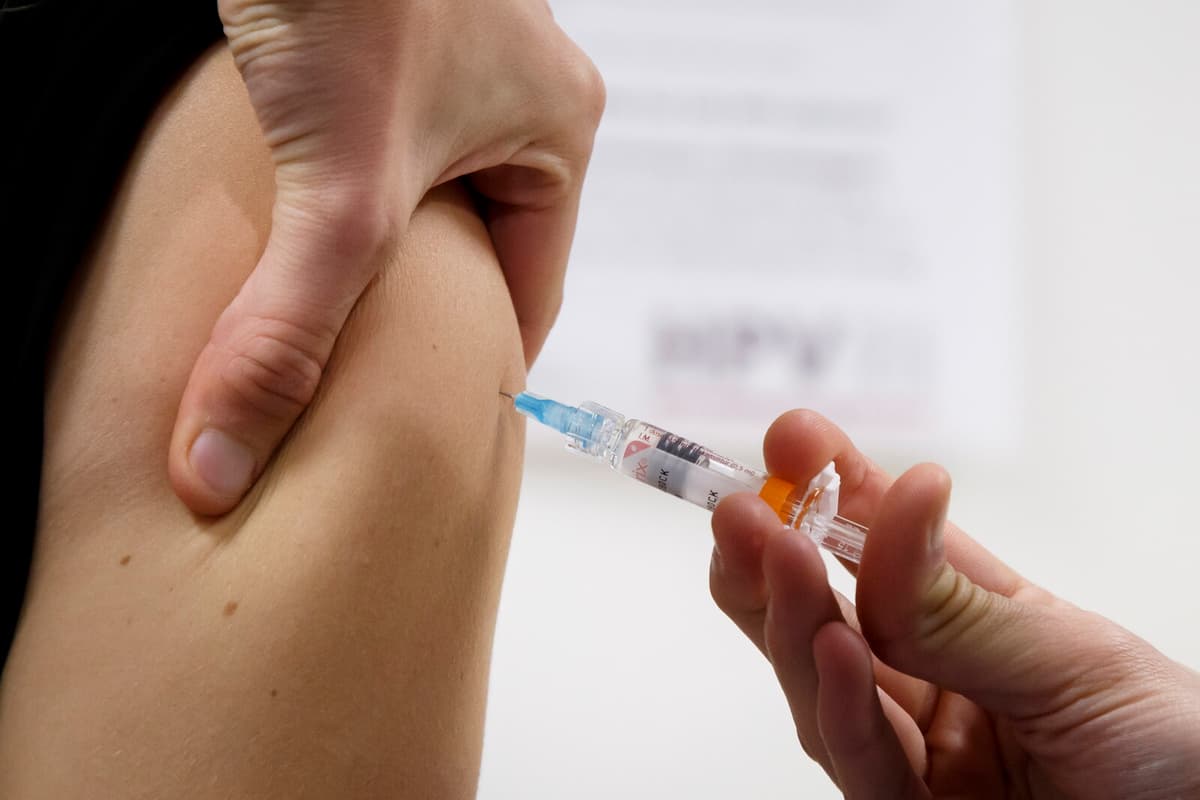The national research project has been ongoing since 2021. Women born between 1994-1999 are offered free HPV vaccination in connection with screening for cervical cancer. HPV is a virus that can cause cervical cancer.
To succeed with the goal – and achieve population immunity – 70 percent of all women in the age group need to take the vaccine. Approximately 47 percent of the country has taken the vaccine so far – but the pressure has increased.
Rush for the vaccine
It's almost 5,000 women per week who are vaccinated. It's really a rush for the vaccinations, says Joakim Dillner, responsible researcher at Karolinska Institutet.
Region Kalmar and Värmland were the first to reach 70 percent of the target group vaccinated.
The idea was that the free vaccinations would stop being given at the turn of the year. But now that it's going so well, it's not suitable to stop, according to Dillner.
It's possible to participate for another six months in the regions that haven't yet reached the goal, he says.
Reduces spread
If you take the vaccine to protect yourself against new infections in combination with screening – then you are basically fully protected against the cancer form. Then you contribute to reducing the spread, according to Dillner.
In the current target group, there are many who haven't taken the vaccine. For those who took the older vaccine, it's good to upgrade to the latest, according to Dillner.
They simply need better protection in this age group.
HPV is an abbreviation for human papillomavirus. There are many different types of HPV.
Some types of HPV can cause cell changes that can develop into cancer, for example in the cervix. These types of HPV are usually found in the genital area and are transmitted through sexual contact. The infection can also heal on its own.
Women in certain ages are called to leave samples to detect cell changes in the cervix early.
There is no way for men to be tested and get an answer if they have HPV.
All children in grade 5 are offered to vaccinate themselves against HPV.
Source: 1177
Kalmar: 70.1 percent
Värmland: 70.0
Halland: 64.4
Blekinge: 58.8
Västerbotten: 58.4
Gävleborg: 58.3
Örebro: 55.9
Uppsala: 53.4
Västmanland: 53.3
Jämtland-Härjedalen: 52.6
Norrbotten: 51.2
Jönköping: 50.8
Västernorrland: 50.1
Västra Götaland: 49.4
Kronoberg: 48.9
Södermanland: 43.7
Östergötland: 39.6
Dalarna: 39.3
Skåne: 39.2
Stockholm/Gotland: 38.8
Source: Cancer Foundation. The figures are from December 2, 2024






